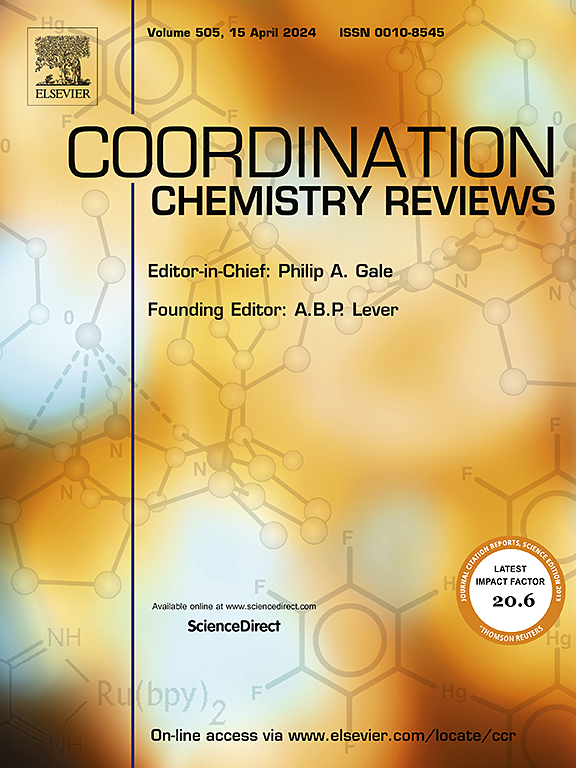铜基纳米平台及其在癌症治疗中的作用
IF 23.5
1区 化学
Q1 CHEMISTRY, INORGANIC & NUCLEAR
引用次数: 0
摘要
铜在生命系统中扮演着既重要又有潜在危险的角色。这一论断加上新出现的证据突出了铜在癌症进展中的关键作用,为推进肿瘤中以铜为基础的治疗奠定了基础。在铜纳米结构的存在下,细胞内响应和调节铜水平的规则和机制与控制离子状态下的铜的规则和机制有很大不同。纳米技术可以利用这些不同的行为来开发新的治疗癌症的策略。在这篇综述中,我们主要关注以下三种情况:(i)通过人为地使癌细胞中的铜超载或耗尽癌细胞所需的不可缺少的内源性铜来破坏铜平衡;(ii)利用铜纳米结构与其他疗法(如化疗、放疗和光热疗法)之间的协同作用;(iii)描述目前存在的或正在开发的工具,用于绘制和跟踪用于治疗的铜纳米结构,因为它们有可能揭示新的癌细胞脆弱性。最后,我们阐明了纳米铜治疗在每个特定部分面临的未来途径和障碍,强调了其成功过渡到临床实践所必需的科学复杂性和实践挑战。本文章由计算机程序翻译,如有差异,请以英文原文为准。
Copper-based nanoplatforms and their role in cancer therapy
Copper plays both an essential and potentially hazardous role for living systems. This assertion coupled with emerging evidences highlighting the pivotal role of copper in cancer progression, set the basis for advancing copper-based therapies in oncology. In the presence of copper nanostructures, the rules and mechanisms applying within cells to respond and regulate copper levels differ significantly from those governing copper in its ionic state. These different behaviors can be exploited by Nanotechnology to develop new therapeutic strategies against cancer. In this review, we focus on three of these scenarios: (i) disrupt the copper equilibrium either by artificially overloading copper in cancer cells, or depleting the indispensable endogenous copper required by cancer cells; (ii) leverage the synergy between copper nanostructures and other therapies, such as chemo–, radio– and photothermal therapy; (iii) describe the tools currently existing or under development to map and track copper nanostructures which are utilized in therapy, since they have the potential to unveil new cancer cell vulnerabilities. Finally, we elucidate the future pathways and obstacles facing nano‑copper therapy in each particular section, highlighting the scientific complexities and practical challenges essential for its successful transition into clinical practice.
求助全文
通过发布文献求助,成功后即可免费获取论文全文。
去求助
来源期刊

Coordination Chemistry Reviews
化学-无机化学与核化学
CiteScore
34.30
自引率
5.30%
发文量
457
审稿时长
54 days
期刊介绍:
Coordination Chemistry Reviews offers rapid publication of review articles on current and significant topics in coordination chemistry, encompassing organometallic, supramolecular, theoretical, and bioinorganic chemistry. It also covers catalysis, materials chemistry, and metal-organic frameworks from a coordination chemistry perspective. Reviews summarize recent developments or discuss specific techniques, welcoming contributions from both established and emerging researchers.
The journal releases special issues on timely subjects, including those featuring contributions from specific regions or conferences. Occasional full-length book articles are also featured. Additionally, special volumes cover annual reviews of main group chemistry, transition metal group chemistry, and organometallic chemistry. These comprehensive reviews are vital resources for those engaged in coordination chemistry, further establishing Coordination Chemistry Reviews as a hub for insightful surveys in inorganic and physical inorganic chemistry.
 求助内容:
求助内容: 应助结果提醒方式:
应助结果提醒方式:


